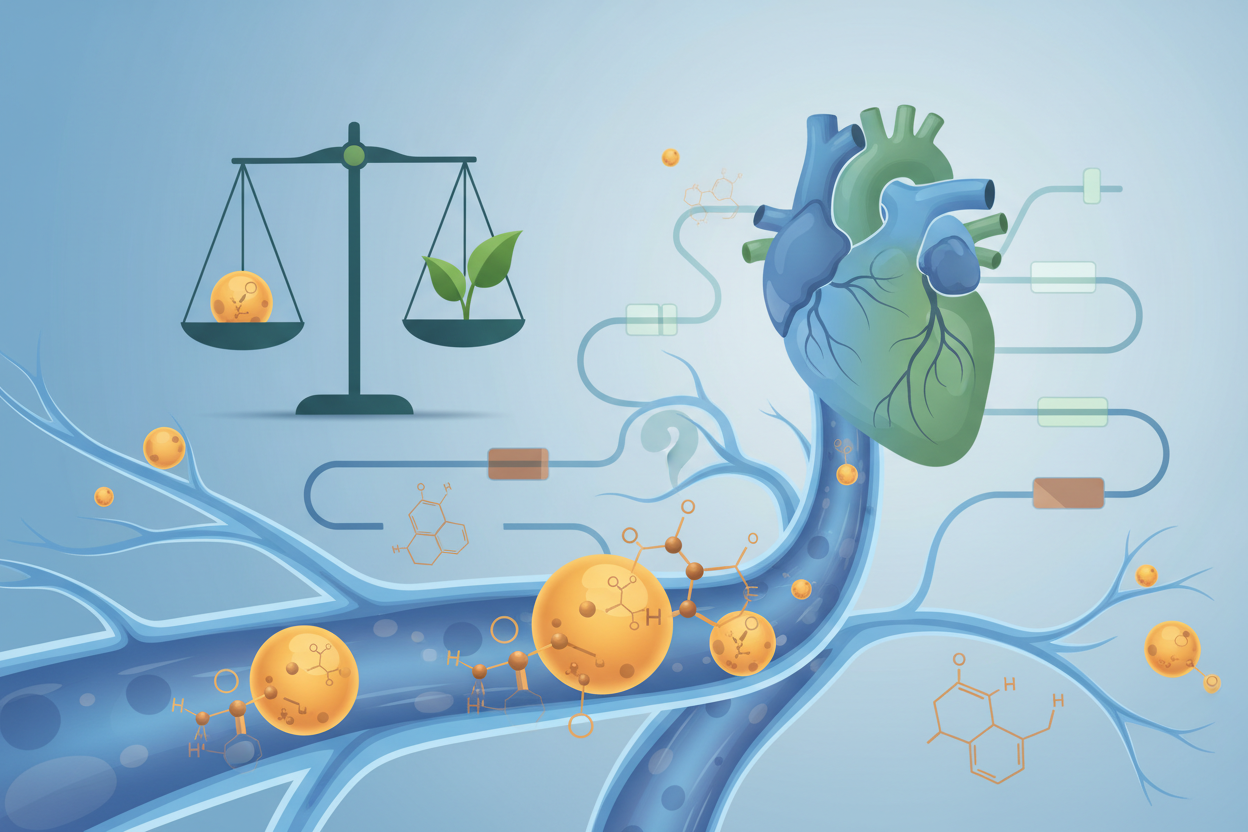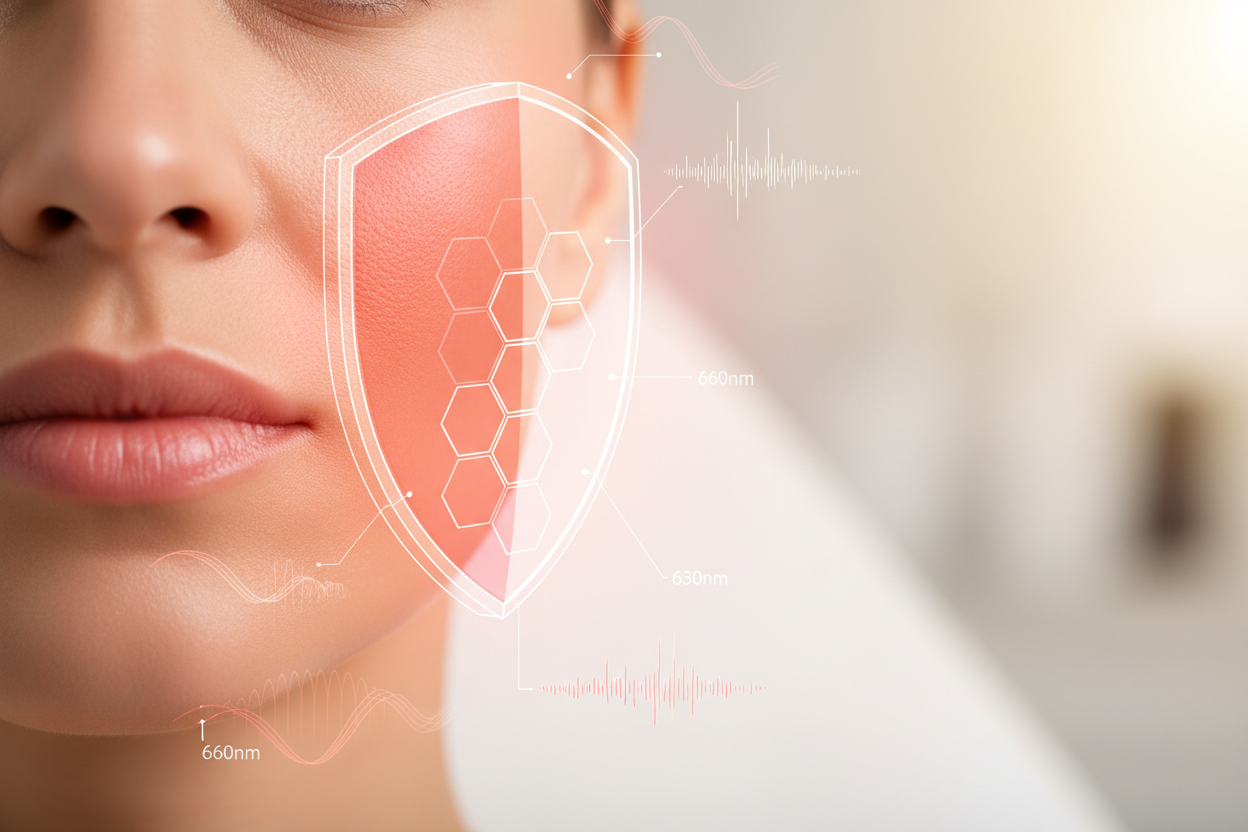Article: Concerns about eye damage from red light from PBM panels have not been confirmed: A new study shows that a single 3-minute exposure improves color vision for up to a week.

Concerns about eye damage from red light from PBM panels have not been confirmed: A new study shows that a single 3-minute exposure improves color vision for up to a week.
Introduction
The aging of the human body is closely linked to the decline in the functionality of mitochondria, the cell's "power plants," which produce the essential energy molecule ATP. Failures in their activity are significantly evident in cells with high energy consumption, including the photoreceptors of the retina. Therefore, in older age, we observe a reduction and decreased function mainly of rods (for night vision) and cones (for color vision).
Recent study (Shinhmar, Hogg, Neveu & Jeffery, Scientific Reports, 2021) brings encouraging news: a single three-minute exposure to red light at a wavelength of 670 nm – especially in the morning hours – significantly improved color contrast sensitivity in individuals aged 37–70 years, and this effect lasted up to one week.
Mitochondria and Photobiomodulation: Why Red Light?
Several previous experiments on animals and humans have shown that exposure to long-wavelength radiation (650–900 nm) can increase mitochondrial activity and reduce the production of pro-inflammatory reactive oxygen species (ROS). Specifically:
• Long wavelengths penetrate into the deeper layers of the retina,
• They optimize the "nanolayer of water" around ATP pumps (rotary complexes of the respiratory)
chains),
• They improve the efficiency of ATP production.
In the case of the retina, which exhibits enormous energy consumption (especially in the cones,
ensuring color vision), thus opening the opportunity to alleviate or reverse some age-related
changes.
Key points of the study
1. Short exposure, low energy
• The study worked with only 3 minutes of irradiation, with an energy density of just 8
mW/cm^2 (for comparison: earlier studies often used around 40 mW/cm^2).
• This dose is approximately one order of magnitude higher than the amount of the 670nm component found in ordinary daylight.
2. Improvement of color perception
• The Tritan axis (blue-yellow contrast) improved on average by 17% in the tested subjects.
• The protan axis (red-green contrast) improved by approximately 12%.
• By dividing into age groups 38–49, 50–59, and 60+, it was shown that improvement occurred in all
in three groups ranged between 11–20% (with slight differences depending on the color axis).
3. Long-term effect
• The effect was monitored at different intervals: 3 hours after irradiation and then again after a week.
• After a week, improvement in some participants was still around 8–10% (compared to the baseline),
to be slightly smaller than immediately after therapy.
4. The time of submission is crucial
• The results clearly show that exposure is effective only in the morning (approximately between 8 and 9 a.m.). • Afternoon exposure (around 12 to 1 p.m.) had negligible or no effect.
The authors assume a connection with circadian changes in mitochondrial functions, that is, with changes in ATP production throughout the day.
5. Confirmation check
• To exclude a purely "training" effect (repeated measurement), part of the volunteers was
tested without the application of 670 nm light, and their results did not improve.
Why are these results important?
• Minimal intervention, quick application: Three minutes of exposure, once a week, with a real improvement in functional vision – this is a very simple and acceptable method for seniors or the aging population.
• Relevance for everyday life: In the modern illuminated world (artificial lights, monitors), we have conditions where full night vision (rods) is often not used as much, but cone vision is essential.
• Savings in the social-health sector: Better color and contrast perception for older people
can increase independence, reduce the risk of accidents (e.g., when distinguishing obstacles or changes in surface), and improve overall quality of life.
How does it work at the cellular level?
The basis is the effect of red light on mitochondria:
• The viscosity of water around mitochondrial rotary pumps is reduced,
• Optimizes the membrane potential required for ATP production,
• Reduces oxidative stress (excessive production of ROS).
Shortwave light (e.g., the blue component) can have an undesirable effect: partial absorption by mitochondria leads to increased oxidative stress and is associated with photodamage. Therefore, selecting the appropriate wavelength is important – in this case, 670 nm.
Study limitations and further directions
• Sample size and distribution: Although the results are convincing, the authors themselves state that they would
It would be appropriate to conduct a more extensive study with more participants to explore individual differences (some people responded more strongly than others).
• Morning vs. afternoon exposure: Why exactly is there such a significant difference in effectiveness? The hypothesis of the involvement of mitochondrial circadian rhythms is suggested.
• Possible practical use: It is questionable whether regular (e.g., weekly) morning "sessions"
could bring longer-term stabilization or even progressive improvement of visual functions.
Conclusion
The study by Harpreet Shinhmar et al. from 2021 provides new and strong evidence that a single three-minute exposure to red light (670 nm) in the morning hours can significantly improve color vision (especially the tritan axis) by 10–20%, and this improvement can last up to one week. This is an exceptionally simple, non-invasive, and inexpensive intervention that could become a significant support for vision in older age. Given how crucial vision is for everyday functioning, such a technique could have a major social and health impact. Further research should explore dosing, appropriate application intervals, and potential long-term cumulative effects in more detail. However, it is already clear that photobiomodulation in this form may be a promising way to maintain good vision in old age.
Link to the study:
Shinhmar, H., Hogg, C., Neveu, M. & Jeffery, G. (2021). Improved colour contrasts sensitivity after single 670 nm exposures associated with enhanced mitochondrial function. Scientific Reports, 11, 22872.
Available online: Scientific Reports
Note: If you are interested in similar therapies, consult their suitability with a specialist, especially if you have a diagnosed eye condition.



Leave a comment
This site is protected by hCaptcha and the hCaptcha Privacy Policy and Terms of Service apply.